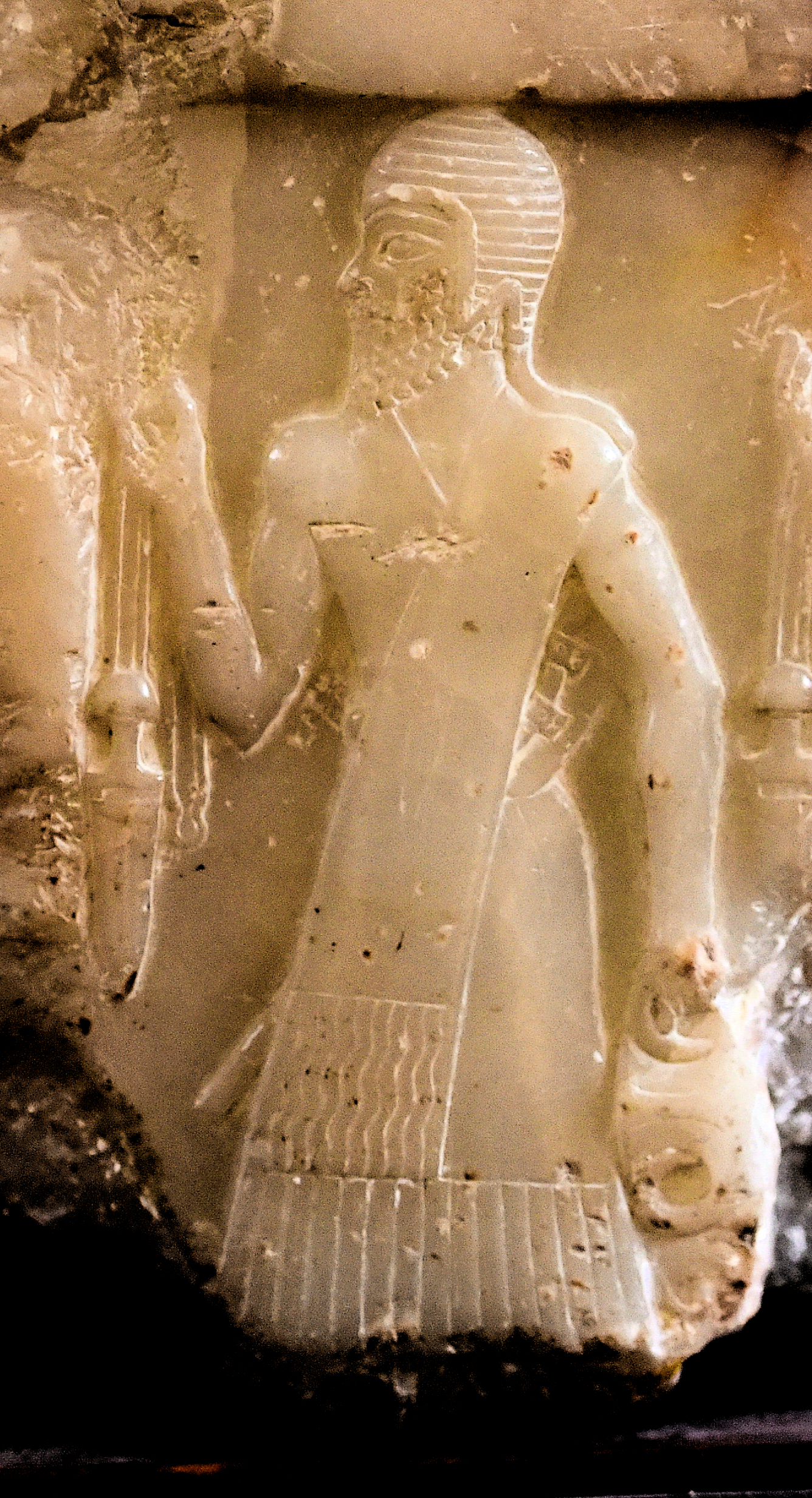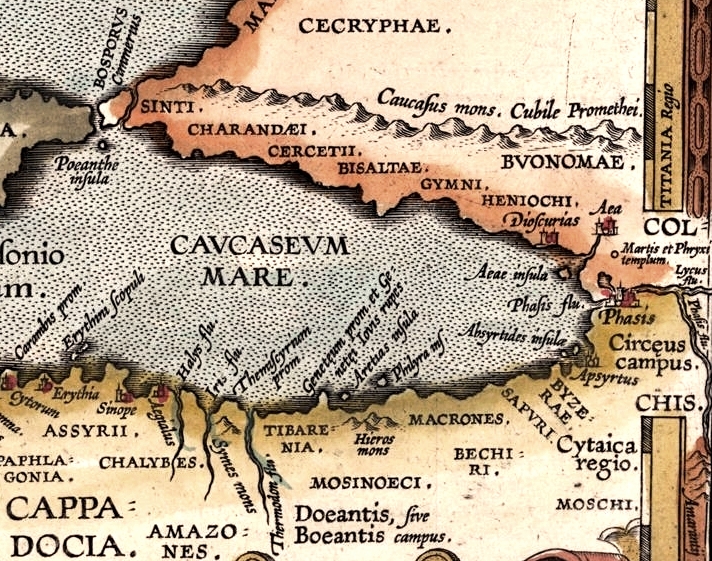|
Name Of Armenia
The name ''Armenia'' enters English via Latin, from Ancient Greek . The Armenian endonym for the Armenian people and country is ''hayer'' and ''Hayastan'', respectively. The exact etymologies of the names of Armenia are unknown, and there are various speculative attempts to connect them to older toponyms or ethnonyms. Armenia/Armenians ''Armenia'' and ''Armenians'' are the most common names used internationally to refer to the country Armenia and the Armenian people. Armenians themselves do not use it while speaking Armenian, making it an exonym. Etymology Multiple theories and speculations exist about the origin of the name ''Armenia'', but no consensus has been reached by historians and linguists. Armenologist Nicholas Adontz has rejected some of the speculations in his 1946 book.' The earliest unambiguous and universally accepted attestation of the name dates to the 6th century BC, from the trilingual Behistun Inscription, where the names ''Armina'' (in Old Persian ... [...More Info...] [...Related Items...] OR: [Wikipedia] [Google] [Baidu] |
Demonym
A demonym (; ) or gentilic () is a word that identifies a group of people (inhabitants, residents, natives) in relation to a particular place. Demonyms are usually derived from the name of the place (hamlet, village, town, city, region, province, state, country, continent, planet, and beyond). Demonyms are used to designate all people (the general population) of a particular place, regardless of ethnic, linguistic, religious or other cultural differences that may exist within the population of that place. Examples of demonyms include ''Cochabambino'', for someone from the city of Cochabamba; French for a person from France; and '' Swahili'', for a person of the Swahili coast. As a sub-field of anthroponymy, the study of demonyms is called ''demonymy'' or ''demonymics''. Since they are referring to territorially defined groups of people, demonyms are semantically different from ethnonyms (names of ethnic groups). In the English language, there are many polysemic words that ha ... [...More Info...] [...Related Items...] OR: [Wikipedia] [Google] [Baidu] |
Ibla (Mesopotamia)
Ragusa (; scn, Rausa ; la, Ragusia) is a city and ''comune'' in southern Italy. It is the capital of the province of Ragusa, on the island of Sicily, with 73,288 inhabitants in 2016. It is built on a wide limestone hill between two deep valleys, Cava San Leonardo and Cava Santa Domenica. Together with seven other cities in the Val di Noto, it is part of a UNESCO World Heritage Site. History The origins of Ragusa can be traced back to the 2nd millennium BC, when there were several Sicel settlements in the area. The current district of Ragusa Ibla has been identified as Hybla Heraea. The ancient city, located on a hill, came into contact with nearby Greek colonies, and grew thanks to the nearby port of Camerina. After a short period of Carthaginian rule, it fell into the hands of the ancient Romans and the Byzantines, who fortified the city and built a large castle. Ragusa was occupied by the Arabs in 848 AD and remained under their rule until the 11th century, when ... [...More Info...] [...Related Items...] OR: [Wikipedia] [Google] [Baidu] |
Armani (kingdom)
Armani was an ancient kingdom mentioned by Sargon of Akkad. Location Syria: ''Armani'' was mentioned alongside ''Ibla'' in the geographical treaties of Sargon. This led some historians to identify ''Ibla'' with Syrian Ebla and ''Armani'' with Syrian Armi. Mesopotamia: Michael C. Astour refused to identify ''Armani'' with Armi, as Naram-Sin makes it clear that the ''Ibla'' he sacked (in c. 2240 BC) was a border town of the land of ''Armani'', while the Armi in the Eblaite tablets is a vassal to Ebla. ''Armani'' was attested in the treaties of Sargon in a section that mentions regions located in Assyria and Babylonia or territories adjacent to the east, in contrast to the Syrian Ebla, located in the west. The later King Adad-Nirari I of Assyria also mentions ''Armani'' as being located east of the Tigris and on the border between Assyria and Babylon. Historians who disagree with the identification of Akkadian ''Armani'' with Syrian Armi place it (along with Akkadian ''Ibla'') north ... [...More Info...] [...Related Items...] OR: [Wikipedia] [Google] [Baidu] |
Mesopotamian
Mesopotamia ''Mesopotamíā''; ar, بِلَاد ٱلرَّافِدَيْن or ; syc, ܐܪܡ ܢܗܪ̈ܝܢ, or , ) is a historical region of Western Asia situated within the Tigris–Euphrates river system, in the northern part of the Fertile Crescent. Today, Mesopotamia occupies modern Iraq. In the broader sense, the historical region included present-day Iraq and Kuwait and parts of present-day Iran, Syria and Turkey. The Sumerians and Akkadians (including Assyrians and Babylonians) originating from different areas in present-day Iraq, dominated Mesopotamia from the beginning of written history () to the fall of Babylon in 539 BC, when it was conquered by the Achaemenid Empire. It fell to Alexander the Great in 332 BC, and after his death, it became part of the Greek Seleucid Empire. Later the Arameans dominated major parts of Mesopotamia (). Mesopotamia is the site of the earliest developments of the Neolithic Revolution from around 10,000 BC. It has been ident ... [...More Info...] [...Related Items...] OR: [Wikipedia] [Google] [Baidu] |
Bronze Age
The Bronze Age is a historic period, lasting approximately from 3300 BC to 1200 BC, characterized by the use of bronze, the presence of writing in some areas, and other early features of urban civilization. The Bronze Age is the second principal period of the three-age system proposed in 1836 by Christian Jürgensen Thomsen for classifying and studying ancient societies and history. An ancient civilization is deemed to be part of the Bronze Age because it either produced bronze by smelting its own copper and alloying it with tin, arsenic, or other metals, or traded other items for bronze from production areas elsewhere. Bronze is harder and more durable than the other metals available at the time, allowing Bronze Age civilizations to gain a technological advantage. While terrestrial iron is naturally abundant, the higher temperature required for smelting, , in addition to the greater difficulty of working with the metal, placed it out of reach of common use until the end of ... [...More Info...] [...Related Items...] OR: [Wikipedia] [Google] [Baidu] |
Vyacheslav Ivanov (philologist)
Vyacheslav Vsevolodovich Ivanov (russian: Вячесла́в Все́володович Ива́нов , 21 August 1929 – 7 October 2017) was a prominent Soviet/Russian philologist, semiotician and Indo-Europeanist probably best known for his glottalic theory of Indo-European consonantism and for placing the Indo-European urheimat in the area of the Armenian Highlands and Lake Urmia. Early life Vyacheslav Ivanov's father was Vsevolod Ivanov, one of the most prominent Soviet writers. His mother was an actress who worked in the theatre of Vsevolod Meyerhold. His childhood was clouded by disease and war, especially in Tashkent. Ivanov was educated at Moscow University and worked there until 1958, when he was fired on account of his sympathy with Boris Pasternak and Roman Jakobson. By that time, he had made some important contributions to Indo-European studies and became one of the leading authorities on Hittite language. Career * 1959–1961 — head of the Research Group for Ma ... [...More Info...] [...Related Items...] OR: [Wikipedia] [Google] [Baidu] |
Tamaz V
Tamaz ( ka, თამაზ) may refer to: * Tamaz Chiladze (born 1931), Georgian writer, dramatist and poet * Tamaz Gelashvili (born 1978), Georgian chess grandmaster * Tamaz Kostava (born 1956), retired Georgian Soviet football player * Tamaz Meliava (1929–1972), Georgian Soviet film director and screenwriter *Tamaz Nadareishvili Tamaz Nadareishvili ( ka, თამაზ ნადარეიშვილი) (19 July 1954 – 31 August 2004) was a Georgian politician who served as head of the Council of Ministers of Abkhazia, a government-in-exile for the breakaway provin ... (1954–2004), Georgian politician, head of the Council of Ministers of Abkhazia * Tamaz Pertia (born 1974), former Georgian football midfielder, currently a manager with Skonto Riga * Tamaz Stephania Stadium, multi-use stadium in Bolnisi, Georgia * Tamaz V. Gamkrelidze (born 1929), Georgian linguist, orientalist, public benefactor, Hittitologist, Academician * Tamaz Vashakidze (born 1961), ballet artist ... [...More Info...] [...Related Items...] OR: [Wikipedia] [Google] [Baidu] |
Indo-European Languages
The Indo-European languages are a language family native to the overwhelming majority of Europe, the Iranian plateau, and the northern Indian subcontinent. Some European languages of this family, English, French, Portuguese, Russian, Dutch, and Spanish, have expanded through colonialism in the modern period and are now spoken across several continents. The Indo-European family is divided into several branches or sub-families, of which there are eight groups with languages still alive today: Albanian, Armenian, Balto-Slavic, Celtic, Germanic, Hellenic, Indo-Iranian, and Italic; and another nine subdivisions that are now extinct. Today, the individual Indo-European languages with the most native speakers are English, Hindi–Urdu, Spanish, Bengali, French, Russian, Portuguese, German, and Punjabi, each with over 100 million native speakers; many others are small and in danger of extinction. In total, 46% of the world's population (3.2 billion people) speaks an ... [...More Info...] [...Related Items...] OR: [Wikipedia] [Google] [Baidu] |
Routledge
Routledge () is a British multinational publisher. It was founded in 1836 by George Routledge, and specialises in providing academic books, journals and online resources in the fields of the humanities, behavioural science, education, law, and social science. The company publishes approximately 1,800 journals and 5,000 new books each year and their backlist encompasses over 70,000 titles. Routledge is claimed to be the largest global academic publisher within humanities and social sciences. In 1998, Routledge became a subdivision and imprint of its former rival, Taylor & Francis Group (T&F), as a result of a £90-million acquisition deal from Cinven, a venture capital group which had purchased it two years previously for £25 million. Following the merger of Informa and T&F in 2004, Routledge became a publishing unit and major imprint within the Informa "academic publishing" division. Routledge is headquartered in the main T&F office in Milton Park, Abingdon, Oxfords ... [...More Info...] [...Related Items...] OR: [Wikipedia] [Google] [Baidu] |
Chalybes
The Chalybes ( grc, Χάλυβες/Χάλυβοι, ka, ხალიბები, Khalibebi) and Chaldoi ( grc, Χάλδοι, ) were peoples mentioned by classical authors as living in Pontus and Cappadocia in northern Anatolia during Classical Antiquity. Their territory was known as Chaldia, extending from the Halys River to Pharnakeia and Trabzon in the east and as far south as eastern Anatolia. According to Apollonius of Rhodes, the Chalybes were Scythians. The Chaldoi, Chalybes, '' Mossynoikoi'', and '' Tibareni'', are counted among the first ironsmith nations by classical authors. , the tribe's name in Ancient Greek, means "tempered iron, steel", a term that passed into Latin as , "steel". Sayce derived the Greek name from Hittite , "land of Halys River". More than an identifiable people or tribe, "Chalybes" was a generic Greek term for "peoples of the Black Sea coast who trade in iron" or "a group of specialised metalworkers". The main sources for the history of the ... [...More Info...] [...Related Items...] OR: [Wikipedia] [Google] [Baidu] |
.jpg)





